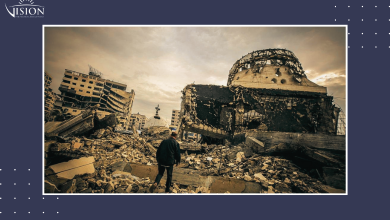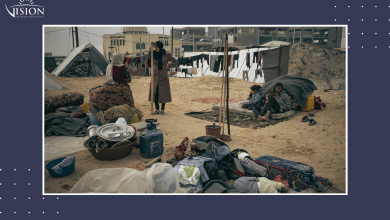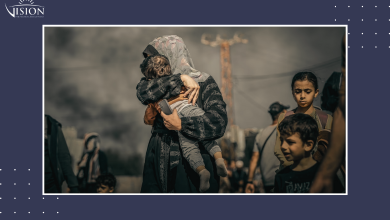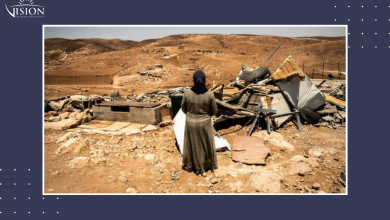Israeli Digital Diplomacy After Tufan Al-Aqsa: Between Misinformation and Failure
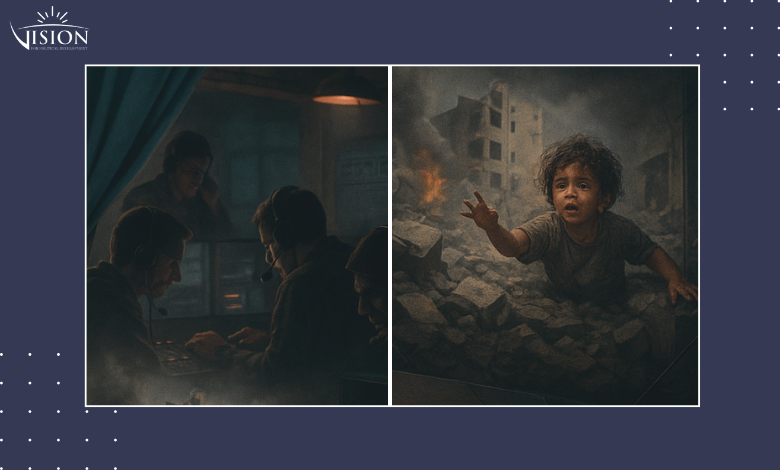
In the digital age, social media platforms have become a key tool for expressing diverse opinions freely and without restrictions. Governments and both official and unofficial institutions have likewise utilized them to achieve their political and foreign policy goals. Following the Tufan Al-Aqsa operation, the Israeli occupation’s swift and direct investment in its digital diplomacy strategy—Hasbara—was particularly notable. It mobilized its financial, security, technological, and cyber capabilities to win the “battle for hearts and minds” in favour of its narrative and account of events.
From day one, various Israeli media outlets waged a fierce media campaign against the Palestinian resistance by demonising it, comparing it to ISIS and dehumanising its members by describing them as ‘human animals’. This campaign also equated resistance fighters with Palestinian civilians, as part of a unified media campaign to reshape international public opinion and justify Israel’s fierce war on the Gaza Strip as a war ‘against terrorism’ and a ‘legitimate right’ and ‘self-defence’, and exporting hashtags such as #IsraelUnderAttack and #HamasIsISIS.
The occupation government also portrayed itself as a victim on YouTube, publishing sponsored advertisements and promoting political events in a tragic tone, in an effort to win the hearts and minds of public opinion. In contrast, Israeli digital propaganda attacked every voice that criticized its crimes in Gaza and mobilized various media figures and counter-narratives to confront international accusations against the Israeli occupation of committing war crimes.
This brings us to the spearhead of this deceptive disinformation campaign: namely, the Hasbara apparatus, which gained notoriety during the war on Gaza.
So, how did Hasbara work to mislead public opinion? And did the occupying state succeed in its digital campaign — or did it fail?
‘Hasbara’ Spearhead
The term “Hasbara” in Hebrew means “explanation” or “clarification,” but it is used as a substitute for the term propaganda, which carries a negative connotation due to its associations with deception and misinformation. At times, Hasbara is also used interchangeably with public relations or public diplomacy in the context of the Israeli occupation — that is, it is employed as one of the tools of soft power, blending information warfare with the strategic objectives of the occupying state on the global stage.
Therefore, Hasbara is considered a primary weapon on Israel’s propaganda frontlines — used to justify its aggressive policies and to whitewash its image in the eyes of international public opinion.
Incidentally, hasbara is not a modern concept or a product of the current conflict. It emerged at the beginning of the 20th century at the hands of one of the leaders of the Zionist movement, the writer Nahum Sokolow, and its aim was to explain the Zionist idea and support the establishment of a national homeland for the Jews in Palestine. The term resurfaces from time to time, especially during periods of escalation of Israeli aggression against the Palestinians.
Official and unofficial institutions, civil, security, military and intelligence agencies, and special security and intelligence units such as Unit 8200 participate in the hasbara or digital diplomacy apparatus. The apparatus has dozens of operations rooms inside and outside the occupied state, databases and devices for tracking digital content, and propaganda campaigns in different languages, all working towards the same goal of achieving political and strategic objectives by employing advanced technology to mislead public opinion. Hasbara’s activities vary between materials published in various media outlets, films and cinema, various seminars and conferences, and the provision of annual grants to hundreds of Jewish students and others to train them in propaganda mechanisms in favour of the occupation whenever the need arises.
Amid the ongoing genocide in Gaza, Hasbara laid bare its malafide intent and deceptive agenda by flooding social media platforms with millions of pieces of misleading information and fake news.
Internal Tools of Deception and Misinformation
The official spokespersons for the Israeli occupation on various digital platforms are the most important arms and tools of Israeli digital diplomacy – Hasbara – as they are active on the pages of the Israeli army and the occupation’s foreign ministry to intensify the anti-Palestinian media campaign. The most prominent of these figures are Avichai Adraee, Eli Cohen, and Danny Danon amongst others. In addition to these voices, there has been an intensification of posting on Israeli government and presidential websites via Twitter, Facebook, Instagram and TikTok, in various languages including Arabic, English, French and Latin.
Israeli journalists, army officers, and settlers also took part in amplifying the narrative surrounding the Tufan Al-Aqsa operation by accusing the resistance of acts such as raping Israeli women and beheading children and infants. They presented fabricated testimonies from alleged survivors of the attack—testimonies that were later proven to be false, given that the individuals in question were not even present at the scene. The primary aim of these claims was to disseminate false information that would reinforce the Israeli narrative and align with the intense media campaign being pushed through various channels.
One of the most widely circulated testimonies was that of a soldier who appeared alongside an Israeli journalist in a live broadcast on the first day of the operation. He claimed to have found beheaded children and raped women. That fabricated testimony spread like wildfire in Western media and was adopted and promoted by Western political figures before Hebrew sources later admitted its inaccuracy due to the lack of visual or concrete evidence. Despite this, many continue to echo and promote these claims as if they were actual crimes that took place.
What was also striking was the use of artificial intelligence to produce fake videos and digitally altered or entirely fabricated images to mislead the public. These manipulated visuals often targeted Palestinian resistance fighters, depicting them as taking shelter in schools and hospitals—facilities that the Israeli army bombed in various parts of the Gaza Strip, to name just one example.
A ‘Cyber Army’ in Support of the Israeli Occupation
As part of its hasbara or digital diplomacy activities, the Israeli occupation launched a ‘cyber army’ of Jewish influencers around the world, foreign celebrities, and fake accounts across various social media networks to support the Israeli narrative and influence global public opinion. The occupation’s Foreign Minister Katz described these influencers as an iron dome that ‘blocks fake news’ on digital platforms.
Among the facts exposed by a number of foreign influencers who refused to work for the occupation is that the latter recruited hundreds of activists and influencers abroad to support its narrative on social media in exchange for huge salaries. It is therefore not surprising to see a social media activist – who knows nothing about the reality of the Palestinian cause – waging a fierce war against Palestinians using his smartphone, simply because he has been promised a handful of dollars in return.
Various Jewish initiatives around the world also contributed to supporting the Israeli narrative by injecting funds and recruiting activists and digital warriors to attack Palestinian content and anyone supporting it abroad. A coordinated campaign of fake accounts came to prominence just days after the Tufan Al-Aqsa, aggressively targeting Hamas and the Palestinian resistance.
These accounts often impersonated Arab personas or used anonymous identities, repeatedly posting the same tweets and digital content. A researcher specializing in digital diplomacy revealed that many of these accounts deliberately stoked divisions among Arab nations by referencing historical and political disputes—such as those between Morocco and Algeria, or the political tensions between Iraq and Kuwait.
Notably, these divisive comments were made on posts and news related to Palestine and the war on Gaza, as if to deliberately sow confusion among Arab populations and divert attention away from the most urgent issue: the ongoing genocide against the people of Gaza.
Undermining Global Solidarity with the Palestinian People
On the other hand, the occupation rushed to launch a pre-emptive attack on global solidarity with Gaza by attacking pro-Palestinian demonstrators in public squares, universities, human rights institutions, representatives, etc. etc., labelling them as ‘anti-Semitic’ and forming pressure lobbies in European countries and the United States to pressure universities and companies to crack down on pro-Palestinian demonstrations and student movements. As usual, the occupation has employed values shared with the West, such as focusing on issues related to democracy, minority rights, homosexuality, etc., as a strategy to gain global support.
The Israeli occupation has also worked in collusion with large technology companies to combat Palestinian digital content and content supporting Gaza on popular digital platforms. On more than one occasion, the cyber division of the Israeli prosecution has announced that it has submitted hundreds of requests to remove content, accounts, pages, and users who publish content that ‘incites violence and terrorism,’ according to its statement.
Many centres specialising in social media have monitored millions of inflammatory messages spreading hatred and calling for the extermination and displacement of Palestinians from their land, while cracking down on Palestinian content, pursuing accounts that support Palestine, deleting them and restricting access to them. For example, the Arab Centre for the Development of Social Media documented 797 digital violations targeting Palestinian digital content in 2024, including the deletion or restriction of content and accounts, mostly on Instagram, TikTok and Facebook.
Has the Occupation Succeeded?
It is clear that Israeli Hasbara has done everything possible to whitewash the image of the occupation. However, its ability to maintain control through soft power at the onset of the Tufan Al-Aqsa noticeably declined, as it faced numerous challenges in justifying the war. These included explicit statements by Israeli officials openly supporting the genocide in Gaza, as well as direct documentation of the massacres by Palestinians in the Gaza Strip—especially on platforms like TikTok and X, which impose relatively fewer immediate censorship restrictions.
Additionally, impartial investigations conducted by some foreign entities cast doubt on various Israeli claims, particularly those accusing Hamas of using hospitals, schools, and other civilian sites for military purposes.
In addition, there has been a striking increase in awareness among the global public, especially among youth populations who have begun to understand the reality of the conflict between Palestinians and Israelis. Hundreds of demonstrations have taken place in major cities around the world and at leading Western and European universities, and activists in more than one country have attacked companies and factories that supply weapons to the occupation. Such movements continue to this day.
It can therefore be said that Hasbara, which the occupying state relied on as a media arm to market the Israeli narrative, did not win, but rather exposed the limitations of its tools in the age of decentralised media.
But has the battle truly ended? Certainly not. The Israeli occupation will spare neither effort nor time in continuing its digital and media warfare—both during and after the conflict—in an attempt to restore the image that once dominated Western public opinion prior to the genocide in Gaza, or even before it.
In this context, it is imperative for Palestinians—both activists and official or unofficial institutions—to continue working tirelessly to expose Israeli practices through all available means and platforms, so that the Palestinian voice remains heard and visible on the global stage.
NOTE: This text is adapted from original Arabic article.


